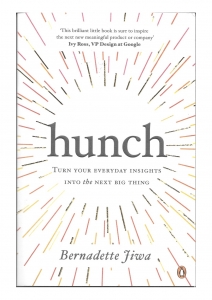The one sentence summary
Smart hunches come from being curious, seeing other points of view, and applying experience to solve problems.
WHAT THE BOOK SAYS 
- Most people can turn everyday insights into the next big thing. It’s all about making intuitive connections that other people overlook.
- You know more than you think – start with what you know.
- Our insights are only as good as our questions – ask a lot of them.
- The Myth of the Innovation Epiphany – actually, it’s usually a slow hunch.
- Ideas are overrated – simply having them isn’t enough. They need to be improved and evaluated.
- It takes practice – you have to keep working at it.
- What we see is not all there is – there is always more to it.
- Groundbreaking ideas don’t start with ideas – they start with a problem.
- The birth of a hunch involves:
1. Embracing curiosity (interest + attention)
2. Tapping into empathy (worldview + understanding)
3. Firing the imagination (context + experience)
- There are three types of curiosity:
Diversive: a hunger for novelty.
Empathetic: the drive to understand another person and see their view.
Epistemic: a deeper quest for understanding that prompts exploration.
- You can evaluate and improve ideas in 6 steps:
- Focus: prioritise undistracted thinking time
- Notice: Practice paying attention to behaviours, patterns and anomalies.
- Question: Get into the habit of questioning.
- Discern: Determine which ideas might be worth pursuing first.
- Predict: Translate insight into foresight.
- Try and test: Get feedback by testing.
WHAT’S GOOD ABOUT IT
- Genius isn’t just about having a huge intellect; it also requires an open heart.
- Distraction is the enemy of insight.
- Ideas = solutions in search of problems
- Opportunities = problems begging for a solution.
- Insight (patterns & practice) + Foresight (potential & predictions) = Hunch
- In short:
- Learn to see problems and discern which are worth solving.
- Understand how it feels to be the person with the problem.
- Build on what is already understood in order to connect ideas and describe new possibilities for the future.
WHAT YOU HAVE TO WATCH
- Nothing. It’s short and to the point.
